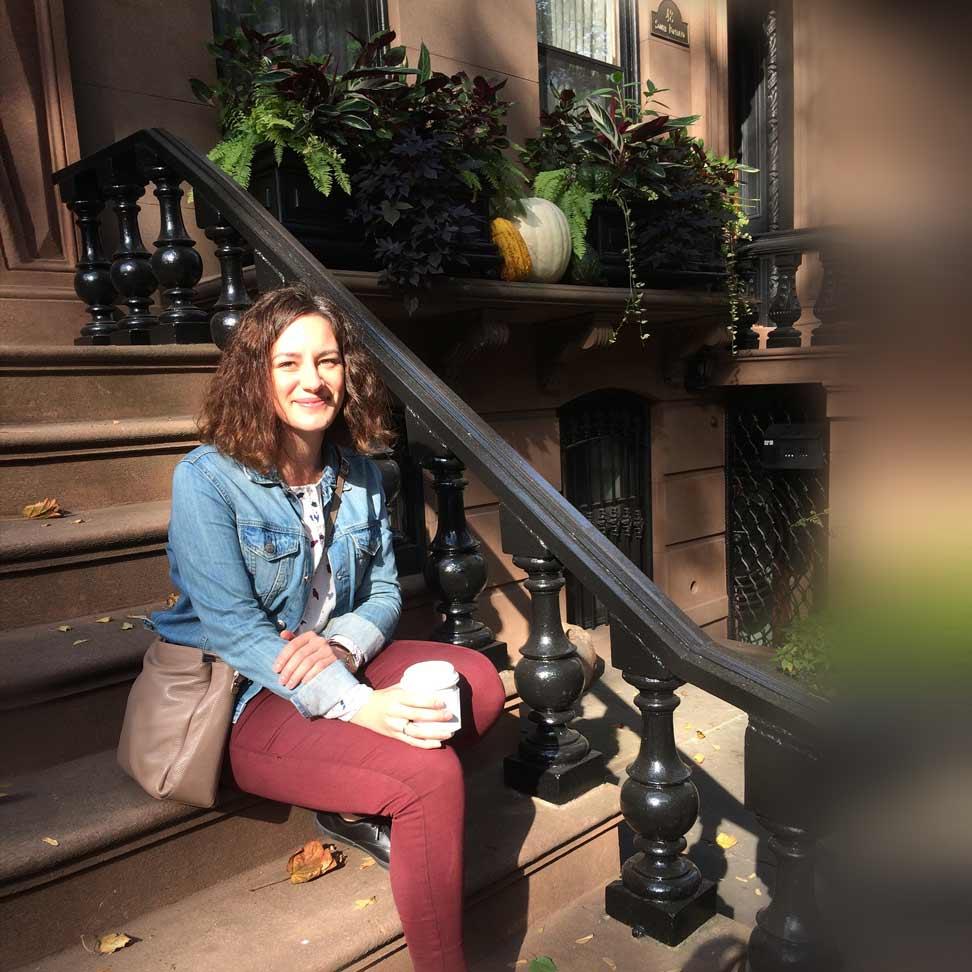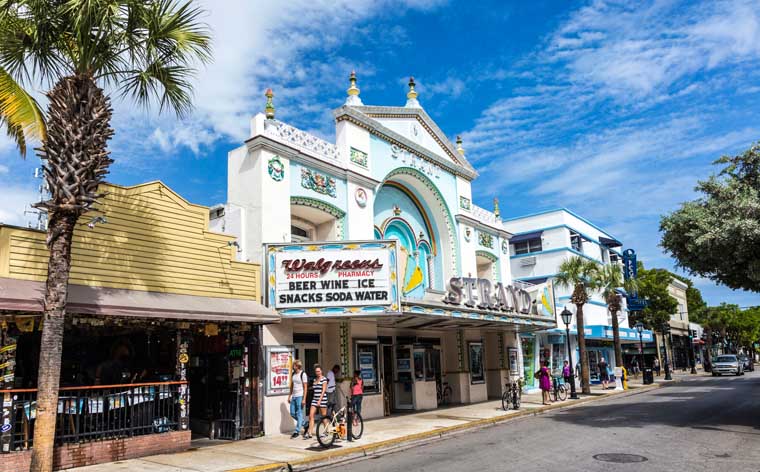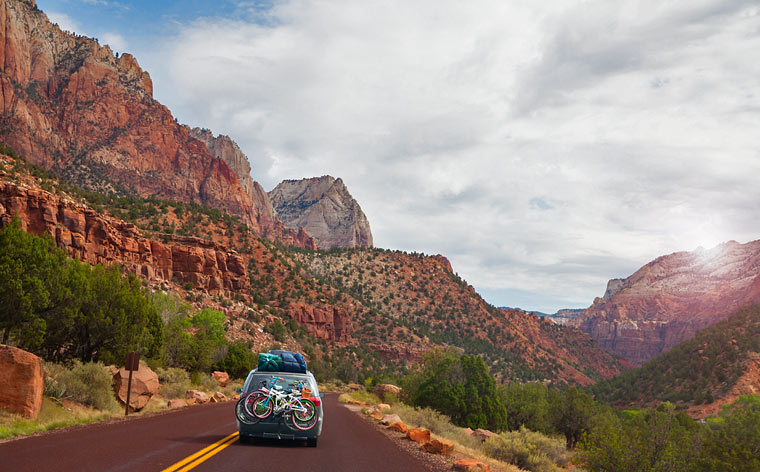Take to the road and discover the natural wonders of Iceland, on our 10-day country-wide itinerary for the cold season. You might even see the elusive Northern Lights – or the Aurora Borealis, an other-worldly and enchanting light phenomenon. Book your flight right away and let us guide you to impressive sights and the best hotels on our Iceland road trip.
We’ve also put together a playlist to keep you in an Icelandic mood.
Take the Ring Road and explore the entire country
Our Iceland road trip will go via the Ring Road, the main highway that goes through the entire country in a – you guessed it – ring. The route, named matter-of-factly Route 1, is 832 miles long and takes you through some of the most stunning scenery Iceland has to offer. For those planning a trip during the winter months, this is the only open route since the interior mountain roads are highly likely to be impassable.
Practical info
Before diving into this exploration head first, make sure to run through some important practical info. During Icelandic winters you can expect slippery and snowy patches, so make sure the 4×4 car you rent comes equipped with studded tires. In case of sudden weather changes, check vegagerdin.is, a website updating road and weather conditions across the country in real time. For more useful information on driving in Iceland, check out Visit Iceland’s website.
For those looking for a safer and more relaxed approach to touring Iceland, there are plenty of guided tours that will take you through the entire country. Alternatively, you can plan your trip around the existent public transport routes that cover the whole country.
The Northern Lights are visible from September to March, anytime between 6pm and 6am – and they might last five minutes or five hours. In order to be able to see them, you’ll also need a clear, dark sky – and luck on your side. So, a bit of flexibility is necessary if you embark on this journey, and sleep might not be the highest priority. Visit Aurora Forecast, a website that’ll show you a five-day forecast indicating whether you’ll be able to see the Northern Lights.
Even if you won’t spot the most impressive luminescence, you’re in luck: Iceland has gobsmacking nature, and once you see it all, you’ll think you arrived just in time for the birth of our planet. The Icelandic nature oozes a primal force, the shapes are precise, the colours intense and the air salty.
Day 1 – Reykjavik
Hallgrímskirkja towers above Reykjavik
Naturally, you are most likely to be flying in to Reykjavik, Iceland’s small-sized (around 120,000 people live here) capital city.
The city is highly walkable, so put on your most comfortable shoes and go explore. Stop by the harbour and watch fishing boats come in bearing fresh caught fish. Climb up the hill to get to Skólavörðustígur, a street bustling with small galleries and design shops. At the top of the hill marvel at monumental Hallgrímskirkja, Iceland’s largest church. Alternatively, take the 40-minute drive south-west of Reykjavik and spend a day at the geothermal natural spa the Blue Lagoon. For more info, have a look at our post on the best natural swimming pools.
End the day with a hearty New Nordic dinner at Dill, one of the city’s best places to enjoy seafood. If you feel like starting the Aurora hunt, head to the city area of Seltjarnarnes by the seaside. Here you’ll be away from street lights and, if lucky, you’ll get to see your first light show.
Are you visiting Reykjavik in November? Music festival Iceland Airwaves (2-6 November) takes the city by storm with a line-up of both Icelandic and international artists.
Recommended hotel: Hotel Reykjavik Centrum (rates start at 15,705 ISK [$173])
Day 2 – The Golden Circle
Awe-inspiring and surreal – Gullfoss Waterfall
Not very far from Reykjavik (one-hour drive), you’ll find three of Iceland’s most popular destinations. Gullfoss Waterfall, Þingvellir National Park and the geysers of Haukadalur form the Golden Circle.
First stop: Þingvellir National Park. Beautiful valleys, snow-capped mountains, clear water lakes – this place is a nature-lovers’ paradise. This is where the North American and Eurasian tectonic plates meet, and geological process have created a natural amphitheatre. It was here that the first Icelandic parliament, the Althing, was established in 930 and held its sessions until 1798.
Second stop: the massive Gullfoss Waterfall. From afar it looks like the river Hvítá simply disappears into the earth, yet when you get closer you notice the impressive amounts of glacial meltwater abruptly plunge into a 104 foot crevice, producing thick mists. You can walk around the edge and peak down into the wild cascade – the views here are dramatic as they are mystifying.
The spectacle at the Strokkur Geyser
Finally, you’ve reach the geothermal area at Haukadalur. This spectacle of erupting boiling water is perhaps Iceland as most imagine it. There are two geysers, Geysir and Strokkur, but the “shows” are provided mostly by the latter. You can get close to it, but be advised that the sulphurous stench will be difficult to stand.
Recommended hotel: Ion Luxury Adventure Hotel (rates start at 35,785 ISK [$343]). Read more about this hotel in our post about the best hotels for seeing the Northern Lights
Day 3 & 4 – South Iceland
Glacier walking at Sólheimajökull
Ever wondered how Vikings managed to walk on ice during harsh winters? Try it out yourself with guided glacier hiking on Sólheimajökull Glacier, a rugged hub of frozen water, where you’ll encounter ice sinkholes, jagged ridges and even an ice wall that you’ll be able climb.
Take the drive to the tiny village of Vik where one of the most impressive beaches is located, the black-sand Reynisfjara beach. Black pebbles cover the entire beach area that also features basalt columns reminiscing of a rocky step pyramid. Basalt columns also peak out of the roaring sea, giving the impression that ancient gods might be conjuring here any minute.
The Sólheimasandur plane wreck is a sight to behold
A short 20-minute drive from Vik and you’re at the site of the haunting Sólheimasandur Plane Wreck. In 1973 a US Navy plane was forced to perform an emergency landing on the Sólheimasandur black-sand beach; all crew members survived, but the plane’s fuselage has been abandoned here, making it one of the Iceland’s most iconic photography locations.
End the day with a hunt for the Northern Lights around Vik.
Recommended hotel: Hotel Katla Hofdabrekka (rates start at 13,340 ISK [$146])
Day 5 & 6 – East Iceland
The glacier caves at Vatnajökull are spectacular
East Iceland spans rolling valleys, steep fjords, mountain peaks, volcanoes and interesting minerals – in short a geological melting pot.
The Vatnajökull National Park, Europe’s largest national park, covers 13% of Iceland’s landmass, and features the Kverkfjöll mountain range housing active volcanoes and glacier caves, hiking heaven Hvannalindir, the ancient dormant volcano Snæfell and wild reindeers. Driving through the East, you’ll pass many villages, all bearing clear influences from Iceland’s North European neighbors, and even France, thanks to the various trade posts established in this area. Fáskrúðsfjörður, located in the center of the East Fjords, was a trading post for French fishermen off East Iceland all throughout the 19th century. The strong French heritage can be quickly observed while walking around – the road signs are both in French and Icelandic.
Linger around, book a tour and explore this isolated corner of the remote country.
Recommended hotel: Fosshotel Eastfjords (rates start at 10,625 ISK [$82])
Day 7 & 8 – North Iceland
The Dettifoss Waterfall in its majestic and powerful pose
This region is home to six ski resorts, with Hlíðarfjall and Tröllaskagi among the best. The latter offers thrill sports such as backcountry skiing, heli-skiing and ski mountaineering.
Another highlight here is the Dettifoss Waterfall, one of Europe’s greatest with 1640 cubic feet of water plunging over the edge every second; to put that in perspective, that’s around 500 baths’ worth of water per second. A one-hour drive away lies the horse-shoe shaped canyon Ásbyrgi. According to Nordic mythology, the canyon was created when Odin’s eight-legged horse, Sleipnir, touched the ground with one of its feet.
Another highlight is Dimmuborgir, a large area of peculiarly shaped lava fields that according to Icelandic myths is the place that connects Earth with hell. The Yule Lads, Iceland’s prankster Santas, have made this place their home and you’ll surely run into them while here.
Akureyri by night
Spend some hours browsing through the streets of Iceland’s second largest city, Akureyri. Though it would be called a town in any other country, Akureyri has the ambitions of a buzzing city: think plenty of cafes, high-quality restaurants and a dynamic nightlife. After rolling through tiny villages, you’ll think you arrived in a metropolis and forget that there are only 18,000 people living here.
Recommended hotel: Icelandair Hotel Akureyri (rates start at 14,046 ISK [$115])
Day 9 – West Iceland
Snæfellsjökull Glacier, one of Iceland’s most picturesque peaks
You’re almost done circling around this astounding country, and you might think you’ve seen it all. Not quite! Just outside the Ring Road lies Snæfellsjökull Glacier. At 4744ft above sea level, the glacier is an active volcano, featuring in Jules Verne’s 1864 adventure novel Journey to the Center of the Earth. On clear days it’s visible from Reykjavik at a distance of 74 miles.
The black-sand beach Djúpalónssandur looks a tiny bit haunting thanks to the peculiar rock formations
Combine glacier touring with a visit to Vatnshellir Lava Cave, showcasing unique lava formations within a length of 656 feet. End the day with a walk on Djúpalónssandur Beach covered with small black stones and surrounded by irregular rock formations.
Recommended hotel: Icelandair Hotel Hamar (rates start at 14,107 ISK [$115])
Day 10 – Drive back to Reykjavik
Before embarking on your return journey, make sure to taste some of Iceland’s famous fermented shark or cured whale at restaurant 3Frakkar, a place that’s earned its reputation for preparing some of the best fish courses in Reykjvik. Even British TV-chef Jamie Oliver is a fan.




